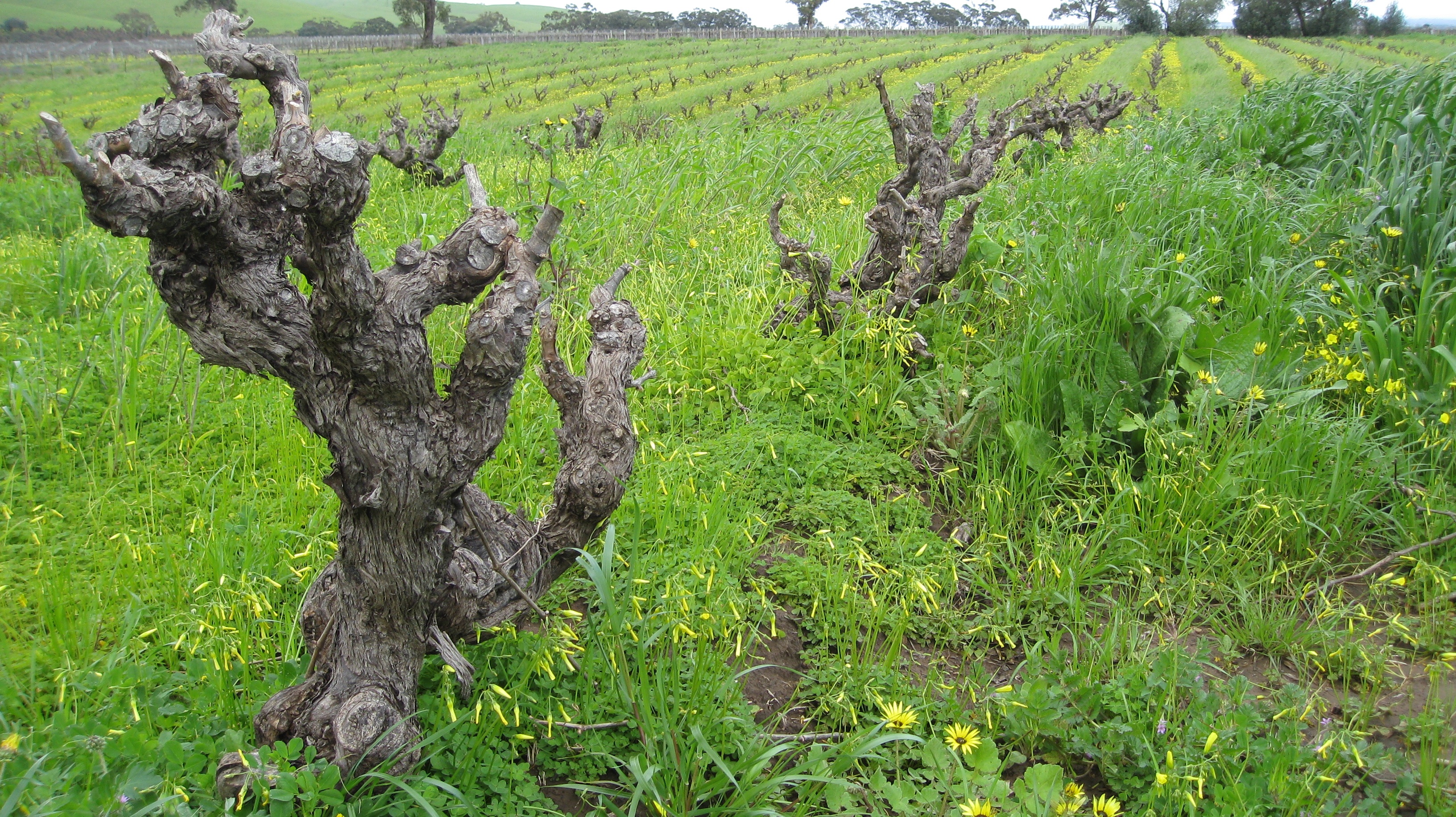
Gnarly 90 year-old grenache vines in the Languedoc
Vieilles vignes is a phrase you frequently see on French wine labels. These are somewhat mysterious words since, though it’s obvious they refer to vines of some advanced age (it literally means old vines), it isn't immediately clear (a) how old ‘old’ is and (b) why we should care.
The conventional wisdom has it that old vines have an advantage over younger ones because they’ve developed more robust, wide-ranging root systems. It’s true that roots that reach deep into the earth may be able to tap reserves of moisture that in a hot, dry summer wouldn't be available to vines of less maturity. While this may have an impact on vine survival, it’s not clear that these superannuated plants take advantage of their more developed, deeply-searching roots to make better wine – at least not in a way that's consistent enough to make a rule of.
On the contrary, there is anecdotal evidence that very young vines can occasionally make startlingly fine wine. The 1973 Stag’s Leap cabernet that bested the bordeaux first-growths Mouton-Rothschild and Haut-Brion in the famous 'Judgment of Paris” tasting in 1976 was made from vines only three years old.
There is some thought that vines in their very first bearing year are not as vigorous as they will become and so have a better balance of leaves to fruit. But there’s also the fact that as the older vines grow, the fruit and canopy they produce diminishes and in this way may eventually circle back to the same sort of balance they enjoyed in youth. The lower fruit yields that characterize older plants also figures in: offering more root and vine support for ever-fewer grapes. Very old vines typically yield little fruit. For some this fact alone is sufficient to demonstrate their superiority.
I was listening intently one day recently to David Mitchell of Mise Wines touting the one hundred year-old carignan vines farmed by France Crispeels in the Languedoc and the great character they give her red cuvées. He claims that part of their greatness is that in addition to being vieilles, they are also malades (sick). He argues that by being both old and unhealthy they offer a double advantage to the winemaker. It may be so, but don’t expect to to see wines labeled vignes vieilles et malades any time soon.
Reading about old vine wine is interesting, but tasting them is better. If you'd like to actually sample the character vieilles vignes are capable of pull the cork on some of the following -- available at Cambridge and South End locations as indicated.
- Vignobles Reveille 'Climax' Cotes de Roussillon - 75% carignan; 25% grenache; average vine age 40 years. Cambridge and South End
- Ostertag Vieilles Vignes Alsace Sylvaner - 100% sylvaner; average vine age 50 years. Cambridge
- Raquillet Vieilles Vignes Mercurey - 100% pinot noir; average vine age 60 years. Cambridge
- Domaine Ledogar 'La Mariole' Vin de Pays de l'Aude- 100% carignan; average vine age 100 years. Cambridge
- Clos Centeilles 'Carignanissime' Minervois - 100% carignan; average vine age 100 years. Cambridge and South End
- Carl Schmitt-Wagner Riesling Kabinett Herrenberg - 100% riesling; average vine age 100+ years. South End
Author - Stephen Meuse is a wine buyer at Formaggio Kitchen Cambridge, and regularly talks wine on local PBS affiliate WGBH with America’s Test Kitchen Radio host Christopher Kimball

